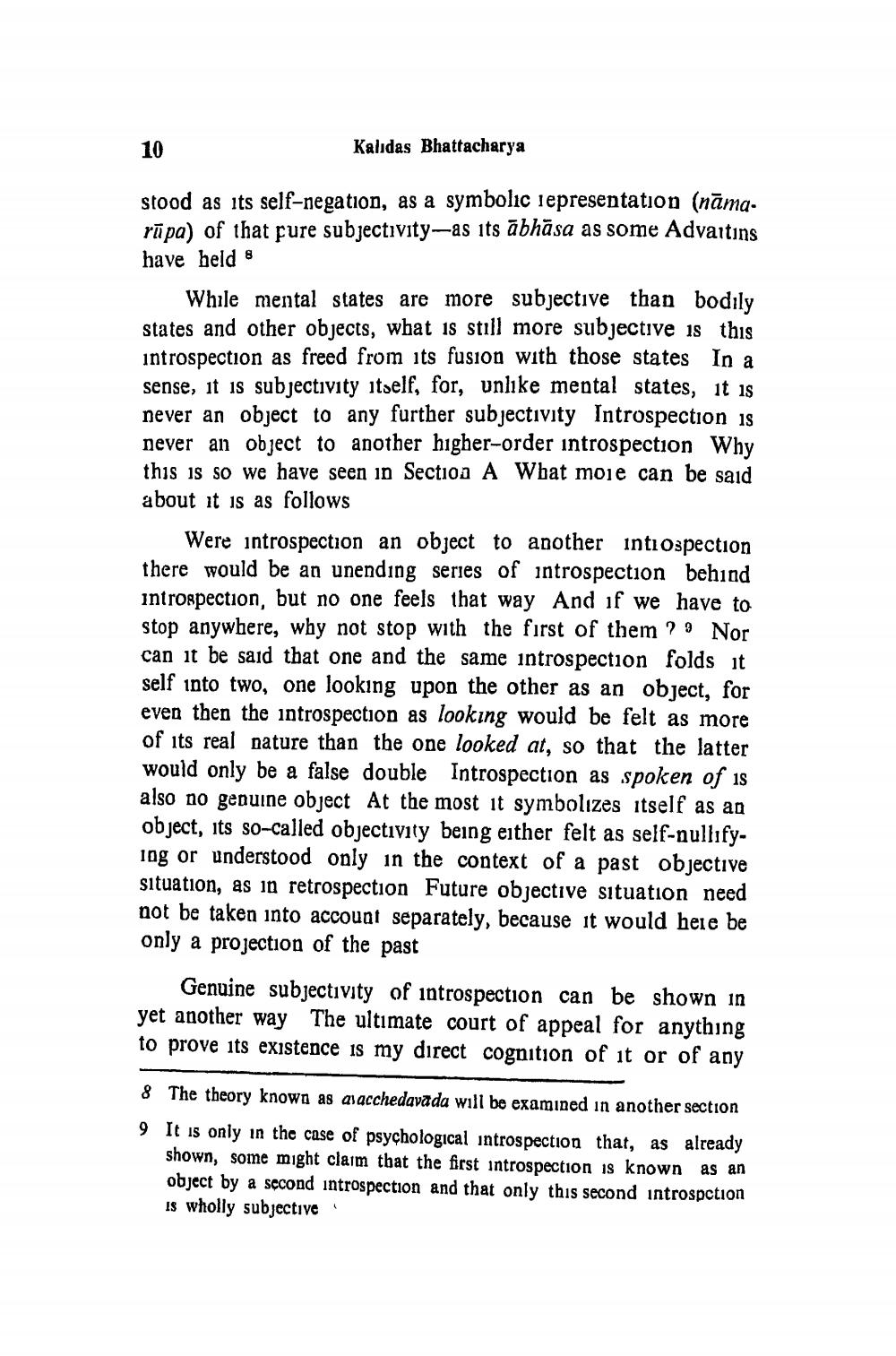________________
10
Kalidas Bhattacharya
stood as its self-negation, as a symbolic representation (nāma. rupa) of that pure subjectivity-as its ābhāsa as some Advaitins have held 8
While mental states are more subjective than bodily states and other objects, what is still more subjective is this introspection as freed from its fusion with those states In a sense, it is subjectivity itself, for, unlike mental states, it is never an object to any further subjectivity Introspection is never an object to another higher-order introspection Why this is so we have seen in Section A What moie can be said about it is as follows
Were introspection an object to another introspection there would be an unending series of introspection behind introspection, but no one feels that way And if we have to stop anywhere, why not stop with the first of them? Nor can it be said that one and the same introspection folds it self into two, one looking upon the other as an object, for even then the introspection as looking would be felt as more of its real nature than the one looked at, so that the latter would only be a false double Introspection as spoken of is also no genuine object At the most it symbolizes itself as an object, its so-called objectivity being either felt as self-nullifying or understood only in the context of a past objective situation, as in retrospection Future objective situation need not be taken into account separately, because it would here be only a projection of the past
Genuine subjectivity of introspection can be shown in yet another way The ultimate court of appeal for anything to prove its existence is my direct cognition of it or of any
8 The theory known as avacchedavada will be examined in another section 9 It is only in the case of psychological introspection that, as already shown, some might claim that the first introspection is known as an object by a second introspection and that only this second introspction Is wholly subjective
A




